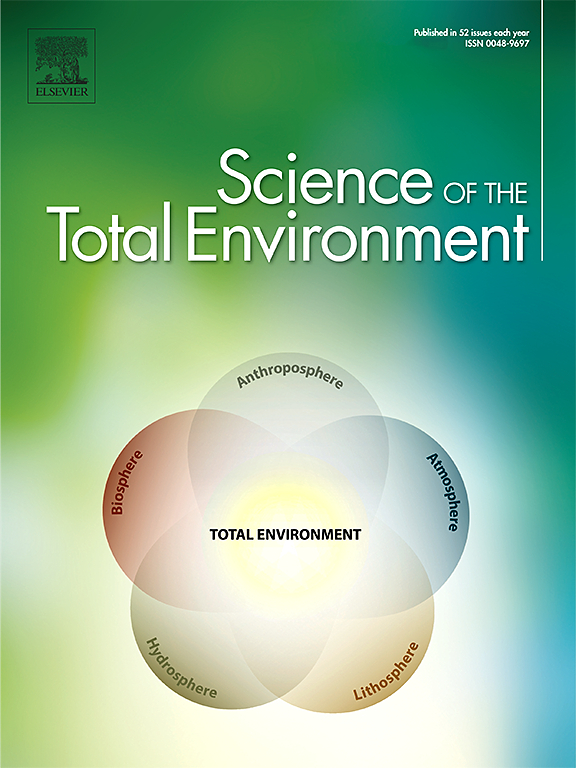Evaluation of an open-source nutrient delivery model for estimating pesticide loads in river catchments
IF 8.2
1区 环境科学与生态学
Q1 ENVIRONMENTAL SCIENCES
引用次数: 0
Abstract
Quantifying pesticide runoff hazard in catchments is necessary to predict the impacts and target mitigation. Achieving this at scale through regular, long-term water quality monitoring at multiple sites is time- and resource-intensive. Ideally, such monitoring should be supplemented by models that can estimate pesticide loads in a quicker, less costly manner, especially for unmonitored catchments.
We developed a novel modelling method combining the Integrated Valuation of Ecosystem Services and Tradeoffs Nutrient Delivery Ratio (InVEST® NDR) model and the UKCEH Land Cover® plus: Pesticides maps to estimate pesticide load across England. The InVEST NDR model is a widely used, open-source pollutant runoff model, but has not yet been evaluated for use with pesticides. We compared our modelled approach with a measurement-based (“measured”) approach. This measured approach used pesticide concentration data from the Environment Agency and river flow data using Qube (a water resource estimation tool) for catchments upstream of the sampling sites: 54 for bentazone and 21 for chlorotoluron.
The significant positive relationships between measured and modelled pesticide loads were stronger when the measured approach accounted for the proportionate area of arable land cover, presumably because the modelled approach only incorporated pesticides from arable sources, explaining up to 90 % of the variation in relative hazard between catchments. Thus, our modelled method forms a flexible approach to mapping relative pesticide runoff hazard over large spatial extents, especially where monitoring is limited. It could also be used to rapidly prioritise catchments for more complex analysis to produce accurate measures of absolute loads.

求助全文
约1分钟内获得全文
求助全文
来源期刊

Science of the Total Environment
环境科学-环境科学
CiteScore
17.60
自引率
10.20%
发文量
8726
审稿时长
2.4 months
期刊介绍:
The Science of the Total Environment is an international journal dedicated to scientific research on the environment and its interaction with humanity. It covers a wide range of disciplines and seeks to publish innovative, hypothesis-driven, and impactful research that explores the entire environment, including the atmosphere, lithosphere, hydrosphere, biosphere, and anthroposphere.
The journal's updated Aims & Scope emphasizes the importance of interdisciplinary environmental research with broad impact. Priority is given to studies that advance fundamental understanding and explore the interconnectedness of multiple environmental spheres. Field studies are preferred, while laboratory experiments must demonstrate significant methodological advancements or mechanistic insights with direct relevance to the environment.
 求助内容:
求助内容: 应助结果提醒方式:
应助结果提醒方式:


